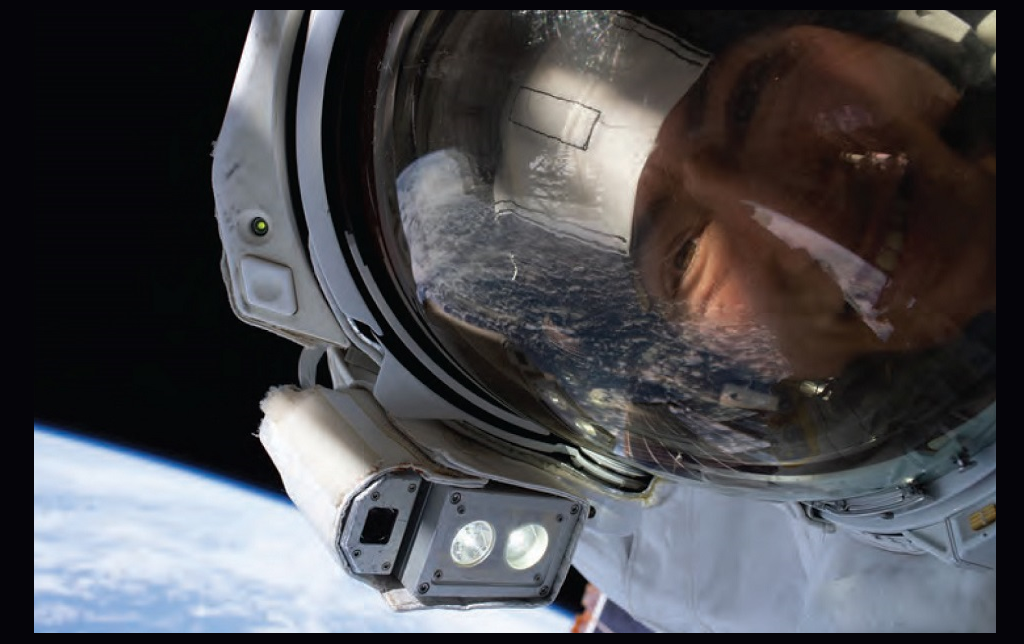Christina Koch has wanted to be an astronaut since she was a little girl. Born in Michigan and raised in North Carolina, Koch held on to her dream and decided to pursue engineering as a way to secure a position with NASA. Now, Koch is not only one of the most integral engineers at NASA and a history maker in space travel, but will make her childhood dream come true in the biggest way possible.
In 2024, Koch will join the Artemis II mission— the first Moon expedition in over 50 years. As the only woman on the four-person team, Koch will officially become the first woman to ever travel to the Moon.
“I’m still just completely, profoundly struck by how grateful I am that pioneers that came before me, my heroes, paved the way for me to do what I was able to do,” Koch said of her career in an interview with Gizmodo. “I can’t wait to see the first female footprints on the Moon.”
In pursuit of a career in engineering, Koch attended North Carolina State University in Raleigh, where she earned Bachelor of Science degrees in electrical engineering and physics, and a Master of Science degree in electrical engineering. Almost immediately upon graduation, she participated in the NASA Academy program, where she worked as an electrical engineer at the Goddard Space Flight Center early in her career and contributed to several NASA space science missions.
From there, Koch was selected to serve as the research associate and a member of the firefighting and search and rescue teams in the United States Antarctic Program from 2004 to 2006. Her work included a year long stay with a winter-over at the Amundsen-Scott South Pole Station and a season at Palmer Station, the only U.S. station in Antarctica. She went on to spend the next several years performing scientific research in countries abroad and working as an electrical engineer at Johns Hopkins University’s Applied Physics Laboratory Space Department, where she contributed to instruments on missions including Juno and the Van Allen Probes—both of which are currently conducting research around Jupiter’s and Earth’s atmospheres, respectively.
In 2013, Koch’s experience led to her selection as one of the eight members of the 21st NASA astronaut class. Upon completing her training two years later, she was assigned to her first space flight in 2018—a long duration mission on the ISS. Serving as a flight engineer on the ISS for Expeditions 59, 60 and 61, she and her crewmates contributed to hundreds of experiments.
Some of the scientific highlights from her missions include doing robotics upgrades to the Alpha Magnetic Spectrometer, growing protein crystals for pharmaceutical research and testing 3D biological printers in microgravity.
Koch conducted six spacewalks, including the first three all-women spacewalks, totaling 42 hours and 15 minutes. She became one of the first women to perform an all-women spacewalk and did so alongside renowned NASA astronaut, Jessica Meir. Koch has spent a total of 328 days in space and holds the record for the longest single spaceflight made by a woman.
Her contributions in the field, both on the ground and in space, have earned her several distinguished honors, including the Neil Armstrong Engineer Award.
Joining Reid Wiseman, Jeremy Hansen and Victor Glover Jr., the first Black man to journey to the Moon, Koch will be serving as Artemis II’s mission specialist. In this role, Koch will be responsible for conducting experiments, operating equipment and performing spacewalks to repair or maintain equipment outside the spacecraft—all tasks she has previously done on other expeditions.
While Koch will continue to make her own history while furthering astrological discovery with NASA, she’s also aware of what her presence on this mission can mean for the future generations of astronauts and engineers. Before being assigned to Artemis II, Koch told Gizmodo what the first woman on the Moon could mean for future space expeditions:
“I think that milestone is just going to be a really important symbolic one to inspire people of all shapes, sizes, genders and races that, if you put your mind to it, you can accomplish things that are hard,” she said. “I look forward to a world where everyone has to work equally as hard to achieve their dreams, and I see that world coming closer and closer to being. I’m just really privileged to have been just a small stepping stone on that road.”
Sources: NASA, Gizmodo, Wikipedia




